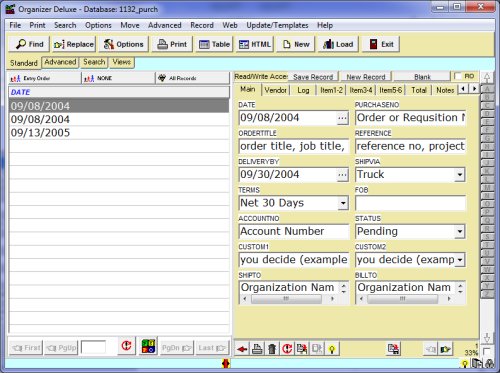In today’s fast-paced business environment, automation has become a game-changer, revolutionizing various aspects of operations. One area where automation plays a vital role is in the purchase order process. By harnessing the power of technology, businesses can streamline and enhance their purchase order processes, resulting in increased efficiency, accuracy, and cost savings. In this guest post, we will explore how automation can transform purchase order processes and the benefits it brings to organizations. To learn more about automation and purchase order systems, visit cloudb2b.co.uk.
1. Streamlining Order Creation and Approval:
Manual purchase order creation and approval can be time-consuming and prone to errors. Automation simplifies the process by providing intuitive interfaces and predefined templates. With a few clicks, users can generate purchase orders quickly, ensuring consistency and accuracy. Automation also enables workflow automation, routing purchase orders for approval to the relevant stakeholders based on predefined rules. This streamlining eliminates bottlenecks, reduces cycle times, and improves overall efficiency.
2. Real-time Inventory Management:
Effective inventory management is crucial for businesses to avoid stockouts or overstocking. Automation enhances this process by integrating purchase order systems with inventory management software. When a purchase order is created, the system automatically updates the inventory levels in real-time. This visibility allows businesses to make data-driven decisions regarding reorder points, stock replenishment, and demand forecasting. By optimizing inventory management, businesses can reduce carrying costs and ensure timely order fulfillment.
3. Vendor Management and Collaboration:
Maintaining strong relationships with suppliers is essential for businesses to secure competitive pricing, quality products, and timely deliveries. Automation facilitates vendor management by providing centralized platforms for communication, document sharing, and performance tracking. Purchase order systems enable businesses to collaborate effectively with suppliers, track order statuses, and resolve any discrepancies promptly. This streamlined collaboration fosters stronger supplier relationships and improves overall supply chain efficiency.
4. Accuracy and Error Reduction:
Manual data entry in purchase order processes is prone to errors and inconsistencies. Automation eliminates these risks by automating data capture and validation. With integration capabilities, purchase order systems can fetch supplier information, product details, and pricing from centralized databases or external sources, reducing manual data entry. This automation ensures accuracy, minimizes data entry errors, and reduces the need for manual reconciliation.
5. Cost Control and Spend Visibility:
Automation provides businesses with comprehensive spend visibility and better control over their expenses. Purchase order systems enable businesses to track and analyze spending patterns, identify areas of cost optimization, and enforce spending controls. Automated approval workflows ensure that purchases align with predefined budgets and spending limits. This real-time visibility and control enable businesses to make informed decisions, negotiate better terms with suppliers, and identify cost-saving opportunities.
6. Reporting and Analytics:
Automation empowers businesses with robust reporting and analytics capabilities. Purchase order systems generate detailed reports on purchasing activities, supplier performance, and spending trends. These reports provide valuable insights for strategic decision-making, identifying opportunities for process improvements, and optimizing procurement strategies. By leveraging data analytics, businesses can drive continuous improvement, mitigate risks, and maximize cost savings.
7. Compliance and Audit Trail:
Maintaining compliance with regulatory requirements and internal policies is critical for businesses. Automation helps businesses adhere to compliance standards by enforcing predefined rules, validations, and regulatory checks. Purchase order systems generate digital audit trails, capturing essential information such as approvals, changes, and document versions. These audit trails simplify the auditing process and ensure transparency, helping businesses meet regulatory requirements and internal governance.
To further explore the benefits of automation in purchase order processes, you can also refer to this article on prokuria.com/ that highlights the advantages of leveraging technology in streamlining procurement. Automation has the power to revolutionize purchase order processes, enhancing efficiency, accuracy, and cost savings.
Conclusion:
Automation has the power to revolutionize purchase order processes, enhancing efficiency, accuracy, and cost savings. By streamlining order creation and approval, enabling real-time inventory management, facilitating vendor collaboration, ensuring accuracy and error reduction, providing cost control and spend visibility, empowering reporting and analytics, and ensuring compliance and audit trail, automation drives transformative improvements in purchase order processes. Embracing automation technology empowers businesses to optimize operations, strengthen supplier relationships, and unlock new levels of efficiency and productivity. Invest in automation to supercharge your purchase order processes and take your business to new heights of success.

